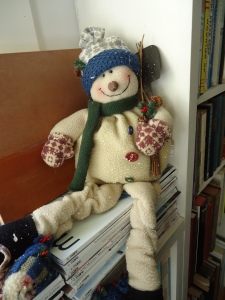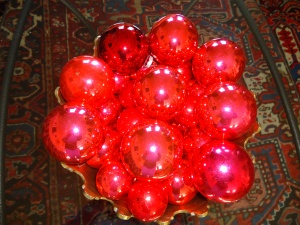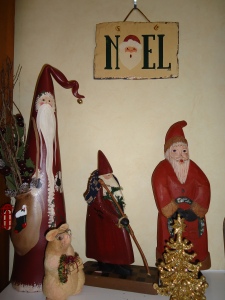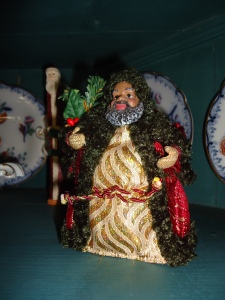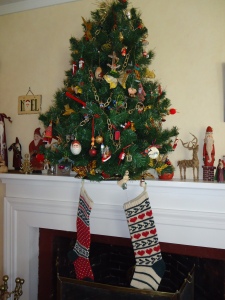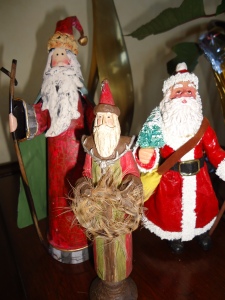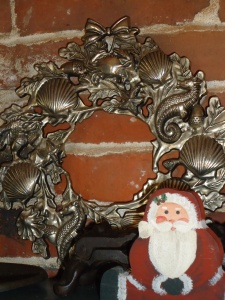
I spent the past weekend in New Jersey with former classmates, celebrating the 50th (yes — unbelievably – 50th) anniversary of our graduating from Glen Ridge High School. One of the highlights of my weekend — and there were many — was speaking at the library which had been my refuge and inspiration during the years I was growing up.
I first discovered the library when I was about ten, and saw their collection of Walter Farley books (yes, I was one of those girls who loved horses) and marveled at their shelf and a half of Doctor Doolittle books — I’d thought there was only one. After that I cajoled my mother or grandmother to take me to the library often, since although it was only about seven blocks from our home, those blocks included a major intersection. My grandfather, who loved mysteries and always had a stack on the table behind his pipe and next to the Morris chair where he spent hours each day, was often included in the expedition.
When I was in sixth grade I was thrilled when my mother and the mothers of two of my friends decided together that the three of us were — yes! finally! — old enough to make the library trip on our own. We walked there every Saturday morning, taking out as many books as we could carry. By then I was reading Betty Cavanna and Lois Duncan and other “books for teenage girls.” (I’m thrilled that Lois Duncan is now one of my Facebook friends ….)
In seventh grade we began attending the school across the street from the library, and I began finding excuses to go to the library after school. There was always a subject to be researched in the encyclopedia collection there, or checked in magazines in the stacks. I discovered the Dewey Decimal system, and read every book on writing … since some day that’s what I would do. Secretly, I dreamed of someday seeing a book I’d written on one of the shelves. I discovered The Writer Magazine. I knew when it arrived at the library each month (it couldn’t be checked out,) and would curl up in a special window seat and read it, cover to cover. I learned about manuscript submission guidelines and agents and rejection slips and how to write dialogue. I studied the market place information, pretending I was going to submit something I’d written. I even got brave enough to send a few poems to magazines, and was proud of the rejection slips that resulted. They made me feel like a real writer. I planned to save enough slips to cover a wastebasket with them, but never did.
When I was a sophomore in high school I started working at the library as a page. I shelved books after school and weekend for fifty cents an hour. After I’d shelved the day’s books I started working my way around the shelves, checking that all the books were shelved correctly. (A lot weren’t, but the librarians never had time to do what I was doing.) It took me most of the school year to check the children’s room, where I also discovered other wonderful authors that were, theoretically, too young for me — but whom I loved.
In my junior year I was moved to the adult department, where I repeated my verification of book locations.
In the summers, in Maine, I became a frequent patron of the Wiscasset Library (where I now do a lot of research for the books I write.)
But the Glen Ridge Public Library wasn’t finished helping me, When I was working on my masters thesis at New York University I lived in New York City, where my libraries of choice were the Jefferson Market Library in Greenwich Village near my home, and the Donnell Library on 53rd Street, which was their version of a children’s room. Librarians in New York were able to find many of the books written for teenagers in the 1950s and 60s that I based my thesis on, but New Yorkers are tough on books. I bothered my mother to represent me back in Glen Ridge, and the library there put in inter-library loans, searching New Jersey libraries for many of the books I was looking for. And finding them,
I hadn’t been back to the Glen Ridge Public Library in decades. But I was thrilled when several of my classmates asked if I’d do a book signing during our reunion, and the library I’d loved invited me to speak there. I felt the way I had when my undergraduate college asked me to come back to speak and gave me a lifetime achievement award. I felt as though I was truly going home.
The Glen Ridge Library today is, I am pleased to report, still wonderful, and, despite the major budget cuts that have affected so many of our nation’s libraries, it has expanded. Its addition has added a special room just for YA books, handicapped accessibility, and more space for books, computers, and research of all kinds .. including a meeting room, where I spoke Saturday. I was also thrilled to see that the parents of one of those two girls who walked to the library with me every Saturday were among the major donors who’d helped the library expand.
Today visitors to my home often joke that it’s like a library. Floor to ceiling bookcases are in every room and most hallways. To me, home and walls of books are synonymous. They are comfort and company and escape; they have stayed the course during the ups and downs of my life.
Books represent home. And last week’s visit to the Glen Ridge Library was, in many ways, even more a homecoming for me than seeing my former classmates. That library was where I grew up.
Filed under: Lea Wait, Uncategorized | Tagged: Donnell Library, Glen Ridge, Glen Ridge Public Library, Jefferson Market Library, Lea Wait, Wiscasset Library | 5 Comments »
 Lea Wait, here, wishing everyone a Happy Holiday! In my house, it’s a Merry Christmas. And it’s celebrated, first and foremost, by my unpacking some of my collection of Santas, hand-crafted, antique, or just fun, that I’ve collected over the years. The small Christmas tree (actually, the top of an artificial tree I used in a Christmas safety movie I made decades ago) decorated with small ornaments. The “jingle bells” on the front door. My grandfather’s velvet-covered copy of “The Night Before Christmas.” Wreaths. Candles. And ..
Lea Wait, here, wishing everyone a Happy Holiday! In my house, it’s a Merry Christmas. And it’s celebrated, first and foremost, by my unpacking some of my collection of Santas, hand-crafted, antique, or just fun, that I’ve collected over the years. The small Christmas tree (actually, the top of an artificial tree I used in a Christmas safety movie I made decades ago) decorated with small ornaments. The “jingle bells” on the front door. My grandfather’s velvet-covered copy of “The Night Before Christmas.” Wreaths. Candles. And ..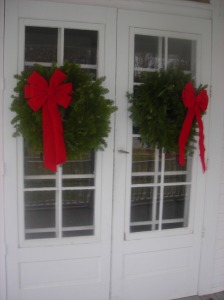 . but, come on in. See for yourself!
. but, come on in. See for yourself!



